First of all, the suicide tree aka pong-pong is real and well-known in Thailand as a source of deadly poison. Despite this, the tree is commonly used to decorate streets and parks, so placing a pong-pong in a garden of the White Lotus resort was completely realistic.
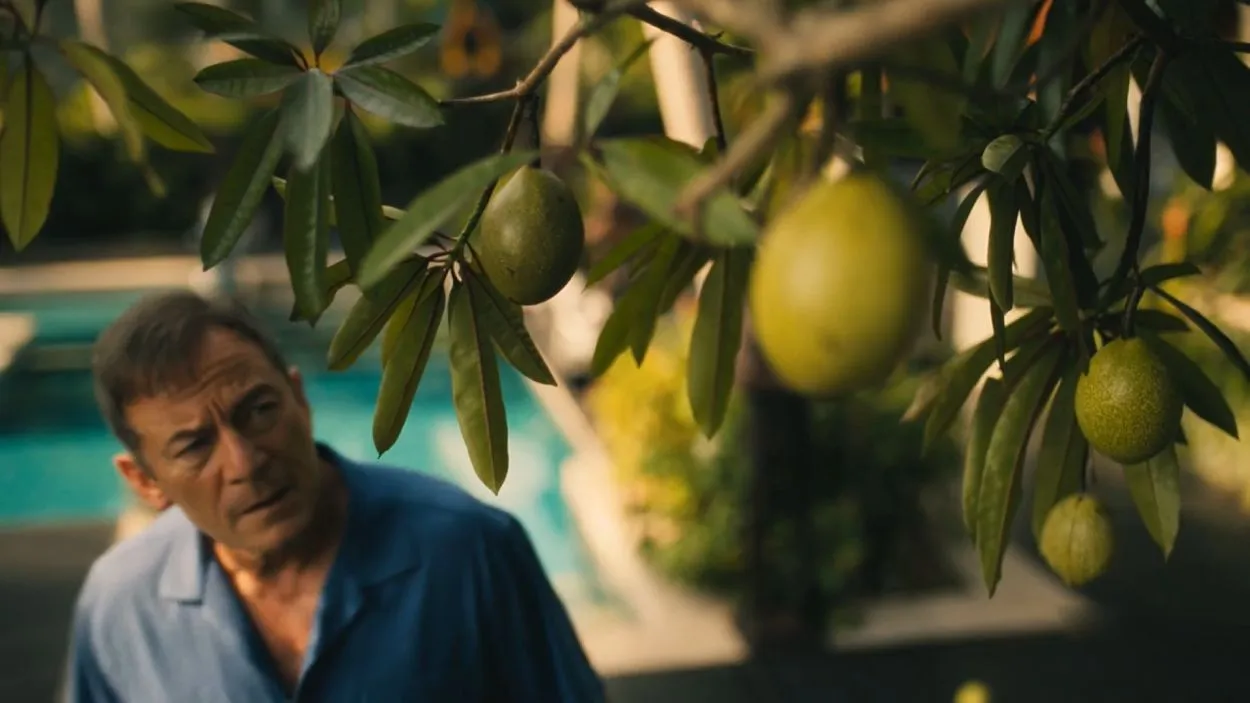
Timothy Ratliff examines a pong-pong fruit in The White Lotus Season 3 – HBO
It was the fruits themselves that were faked in this popular series.
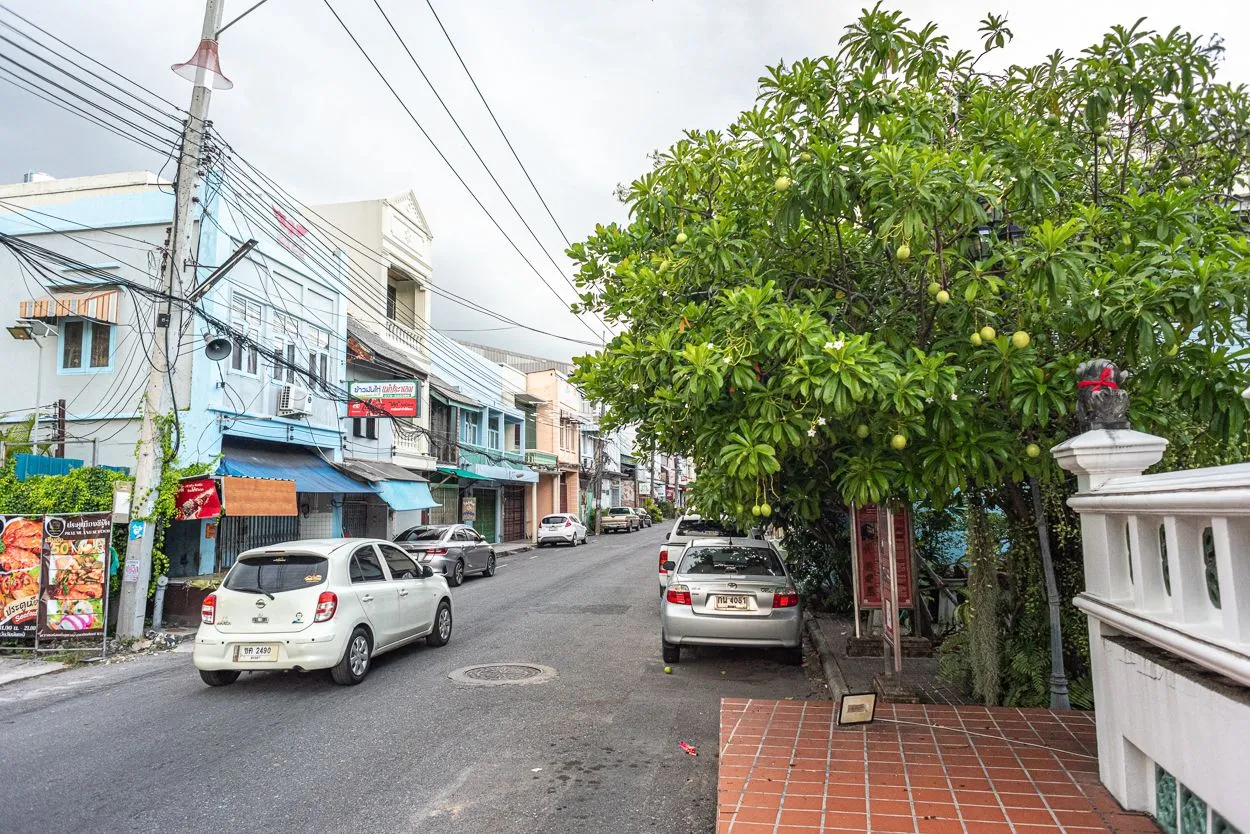
To get illustrations for this post, I went out to find a pong-pong tree in Songkhla, Thailand. It wasn't a difficult mission - plenty of them in each Thai city.
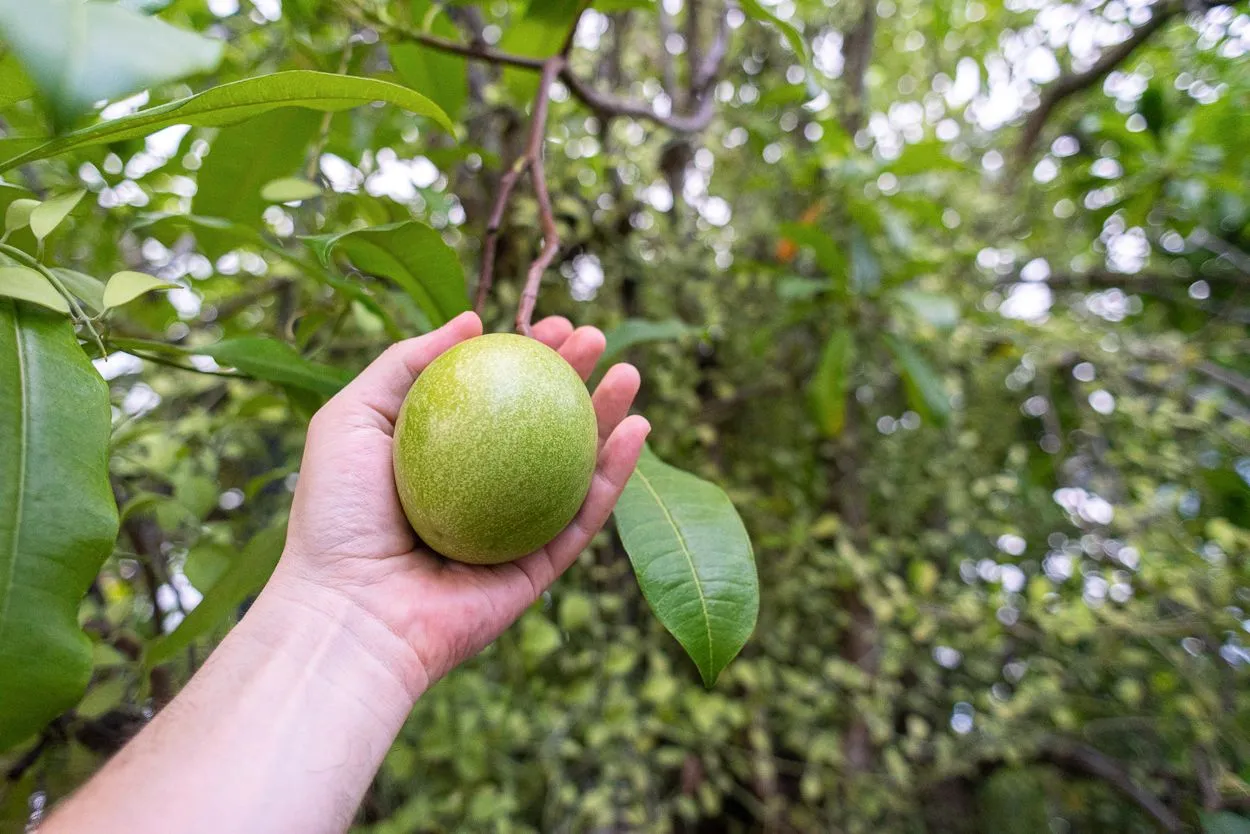
The author holds the pong-pong fruit
HBO didn't alter the color and texture of the fruit's skin.
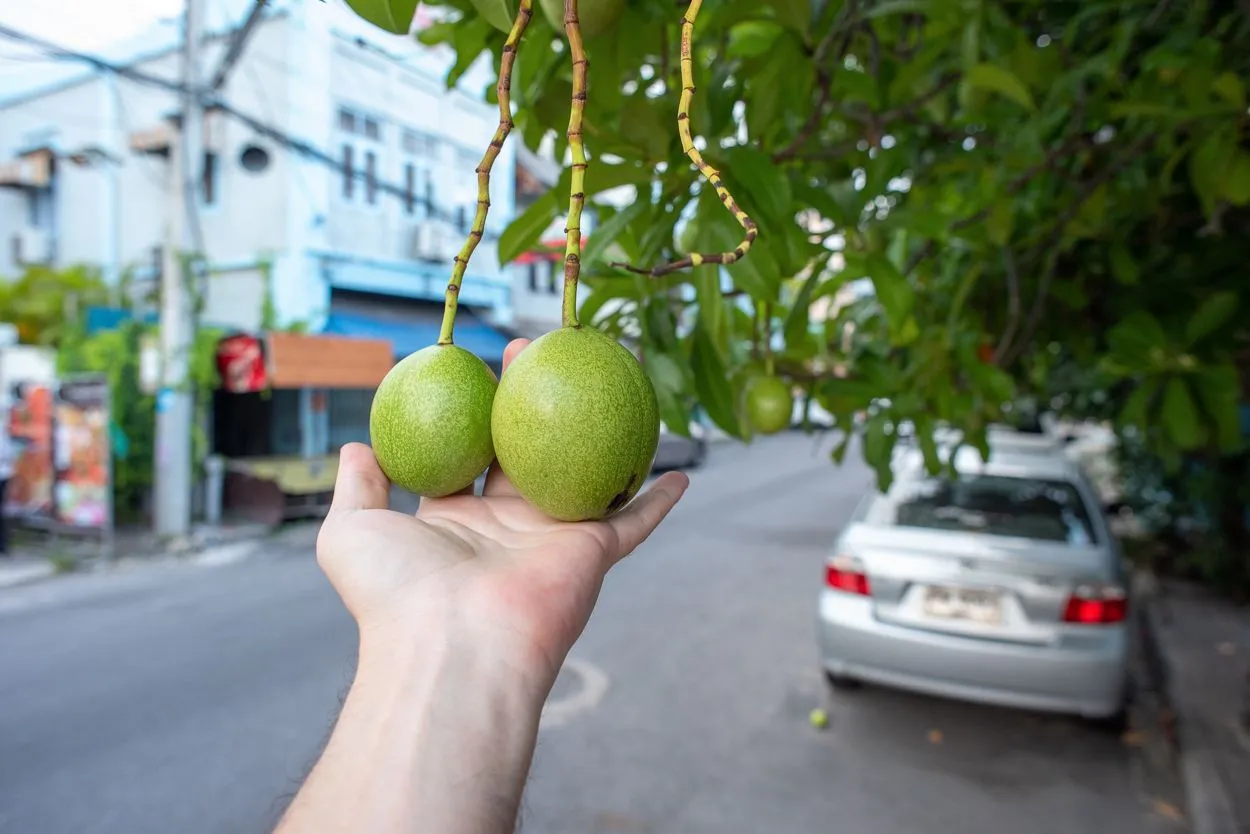
Only peduncle is slightly different:
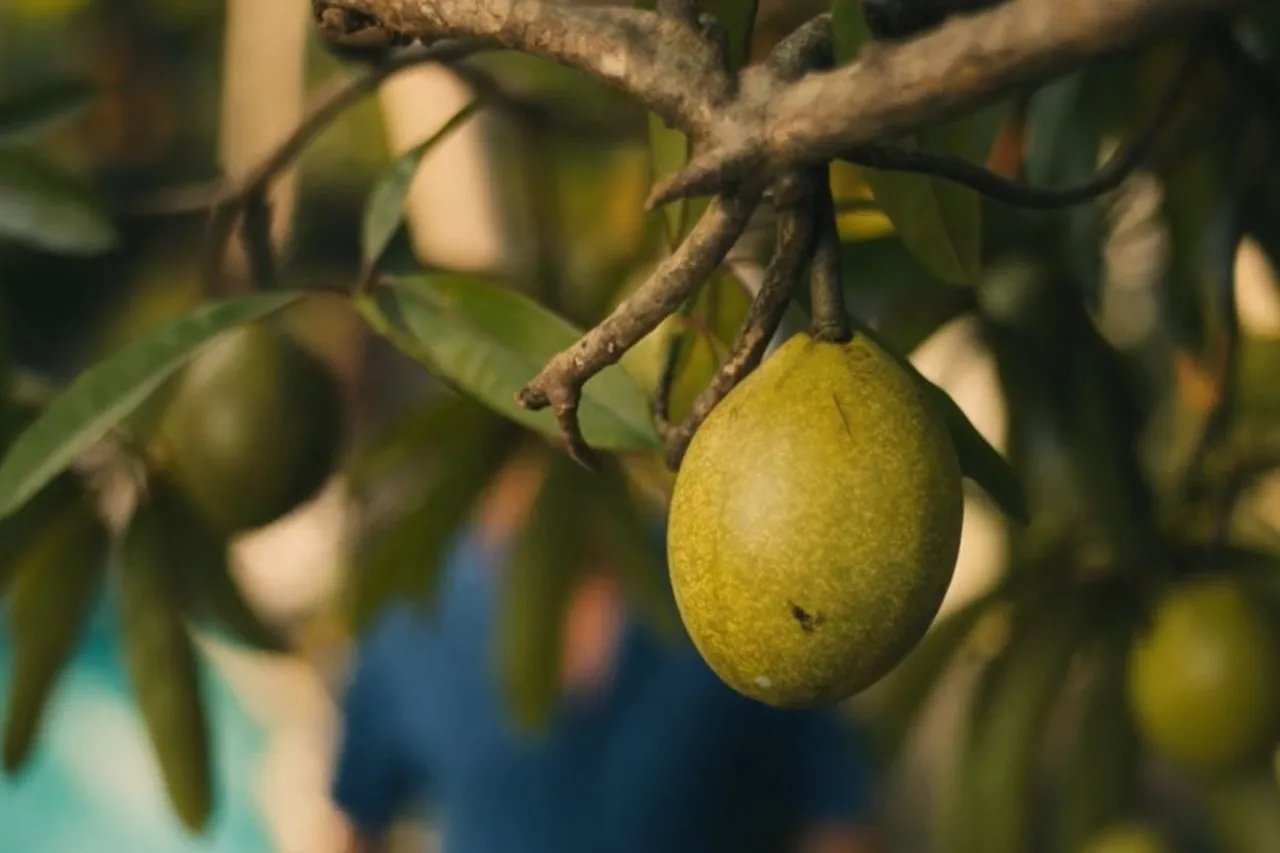
Pong-pong fruit - HBO
Short, thick, and dark greenish brown peduncle.
From this moment, a gap begins to emerge between life and the reality of the TV series.

Ratliff tears a pong-pong fruit with the peduncle - HBO
But the next second, the peduncle disappears, and the skin becomes yellowish:
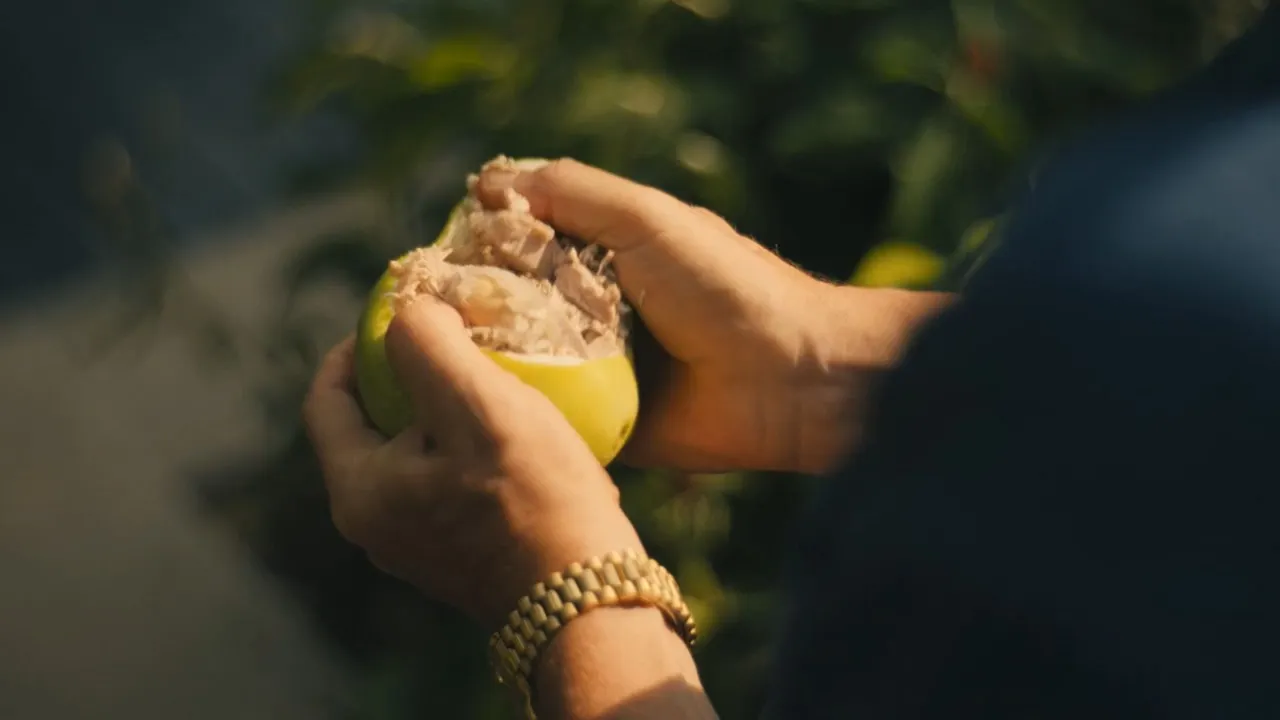
Ratliff examines the fruit's flesh - HBO
And that's where the main fake appears - the pong-pong flesh:

Ratliff takes out kernels from the pong-pong - HBO
What are these particles on the fingers - do they mean the pong-pong fruit is a sort of fig?..
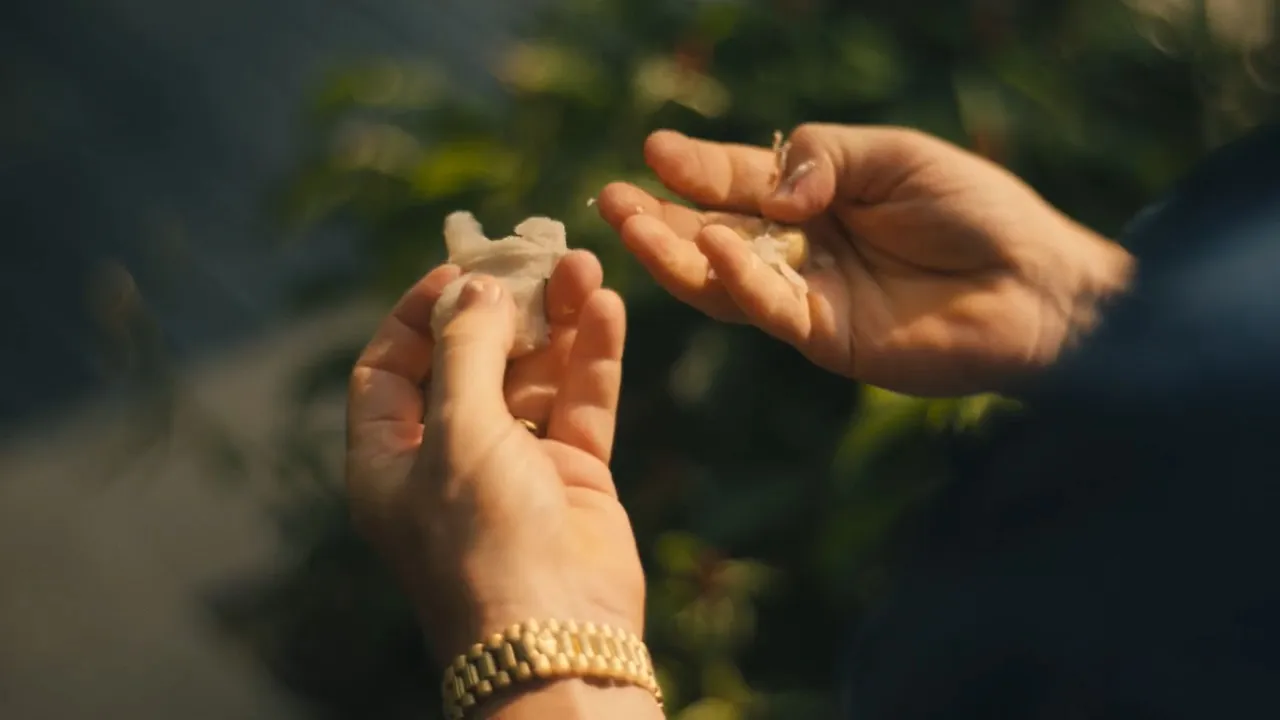
Ratliff holds the poisonous pong-pong kernels - HBO
And this is actually what's inside the pong-pong fruit:
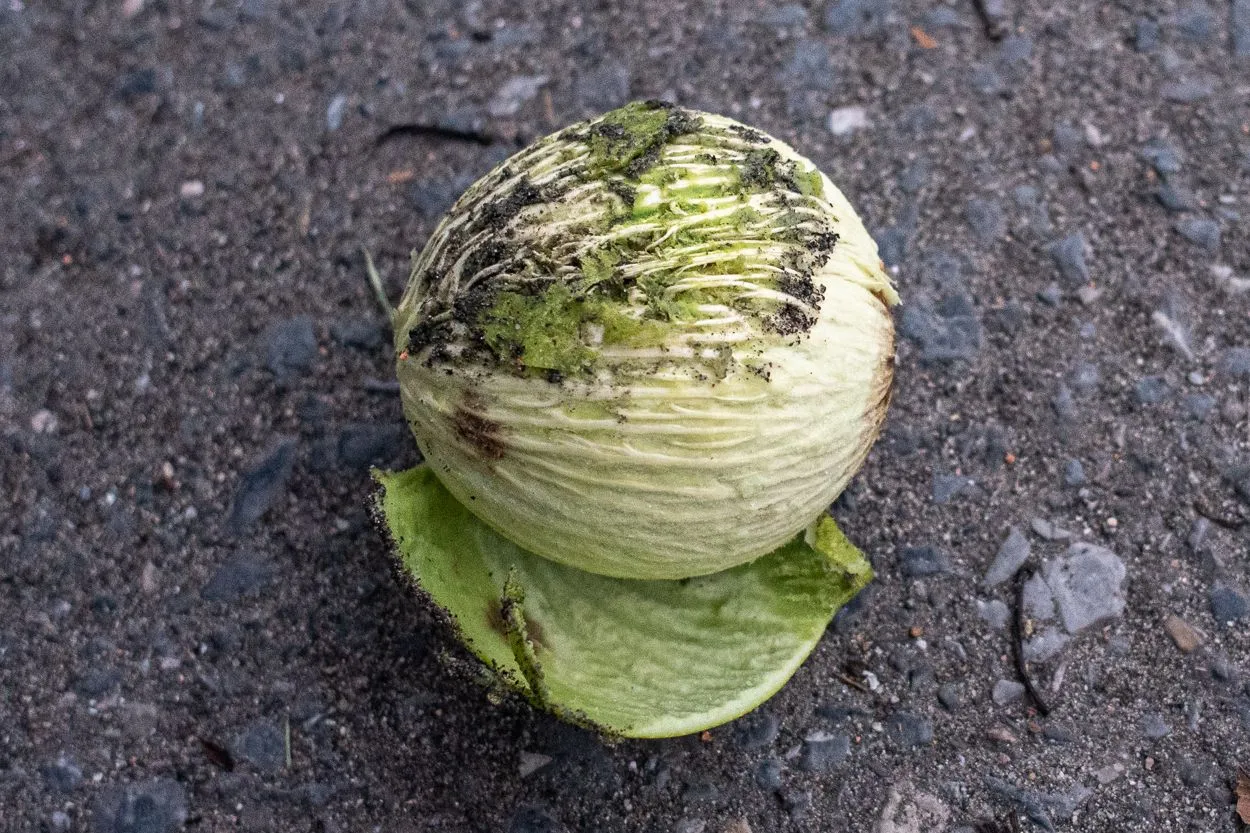
It's easy to peel the skin (a piece of it is lying on the asphalt), but the fruit isn't fleshy. Instead of flesh, it contains a giant seed right below the skin - poisonous kernels are inside this fibrous wooden ball. In other words, the pong-pong fruit is actually a giant seed covered with green skin.
I tried to smash it with my foot (that's why the dirt is on the top of the seed) — but the seed remained unbroken.
If you want to take the kernels out of the pong-pong, you have to work hard with a machete.
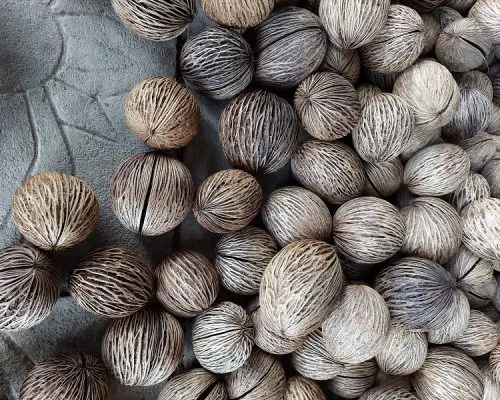
And that's the reason why pong-pong fruits are wooden:
Some fruits are sweet and juicy because evolution has made them appealing to birds and mammals, turning them into seed carriers - the seeds travel in the animals' digestive systems. Pong-pong seeds however travel differently: they are hard and fibrous, making them ideal for long, safe journeys down rivers and across seas.
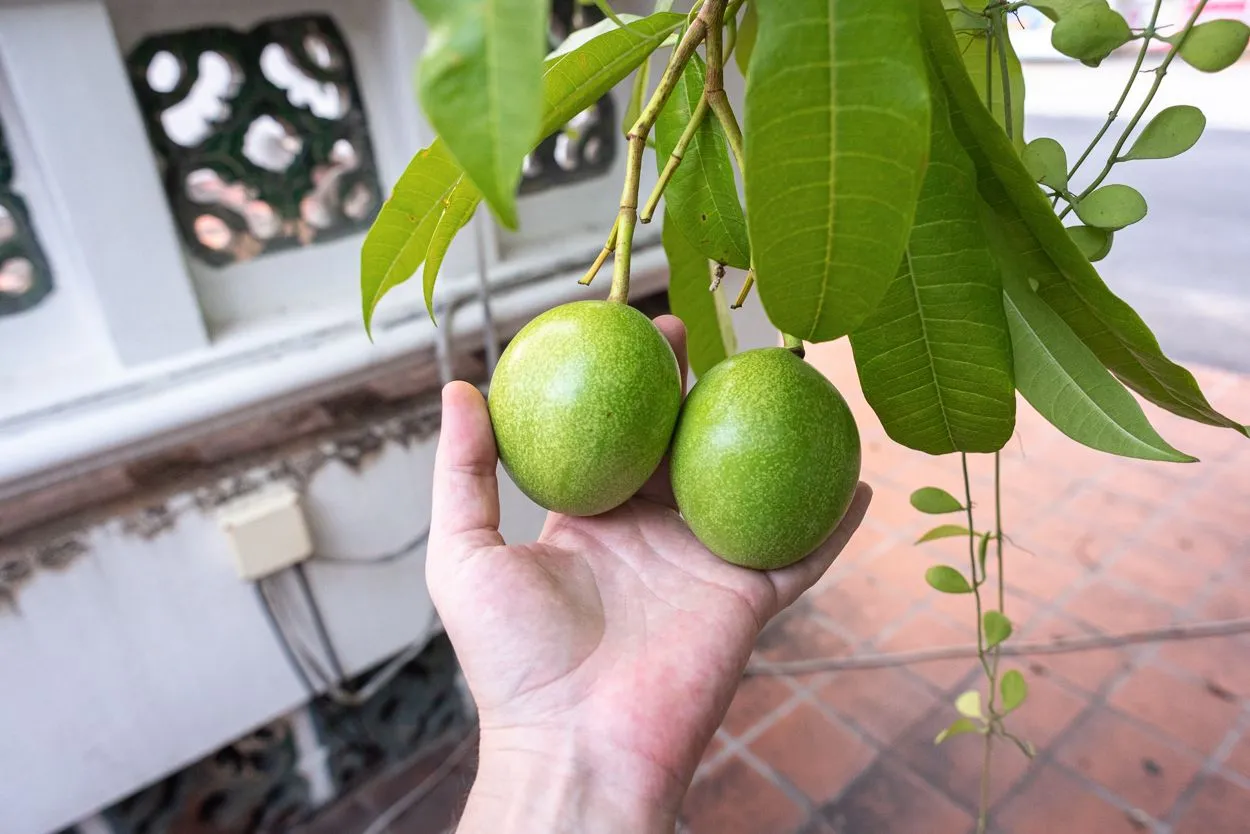
All photos were taken with a Nikkor 24mm on a full-frame DSLR Nikon D750 by the author in April 2025, in Songkhla, Thailand. The rest of the illustrations are screenshots from the HBO series The White Lotus.